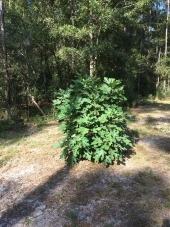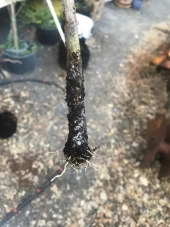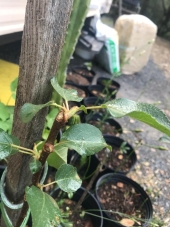This is not strictly hugelkultur, but I thought I'd post because it was an interesting (accidental) experiment. My father owns some property in Florida a mile south of the Alabama border (well, more a collection of sand and pine trees...). After having some timber harvested, there was a series of discarded slash pine trunks left to rot in what was a staging area for the timber loading trucks. We planted a little orchard there a couple years later, with one fig tree right atop a rotting trunk, one with a good bit of of rotting wood mixed in with the soil, and one more distant from this, so more of the "true" Florida sand-hill "soil". These figs are same variety (Celeste) all planted February 2020, cloned from the same tree at the same time - in one photo you see the monster atop the stump (already bearing figs!), and in the background of the other (sorry for dad's crummy photography skills) you see the other two, with the edge of the "monster" on the left hand side.
Anyway, I just thought it was an interesting, unintentionally "controlled study" of the benefits of organic matter addition and quasi-hugelkultur in particular fopr any of you contemplating it.









